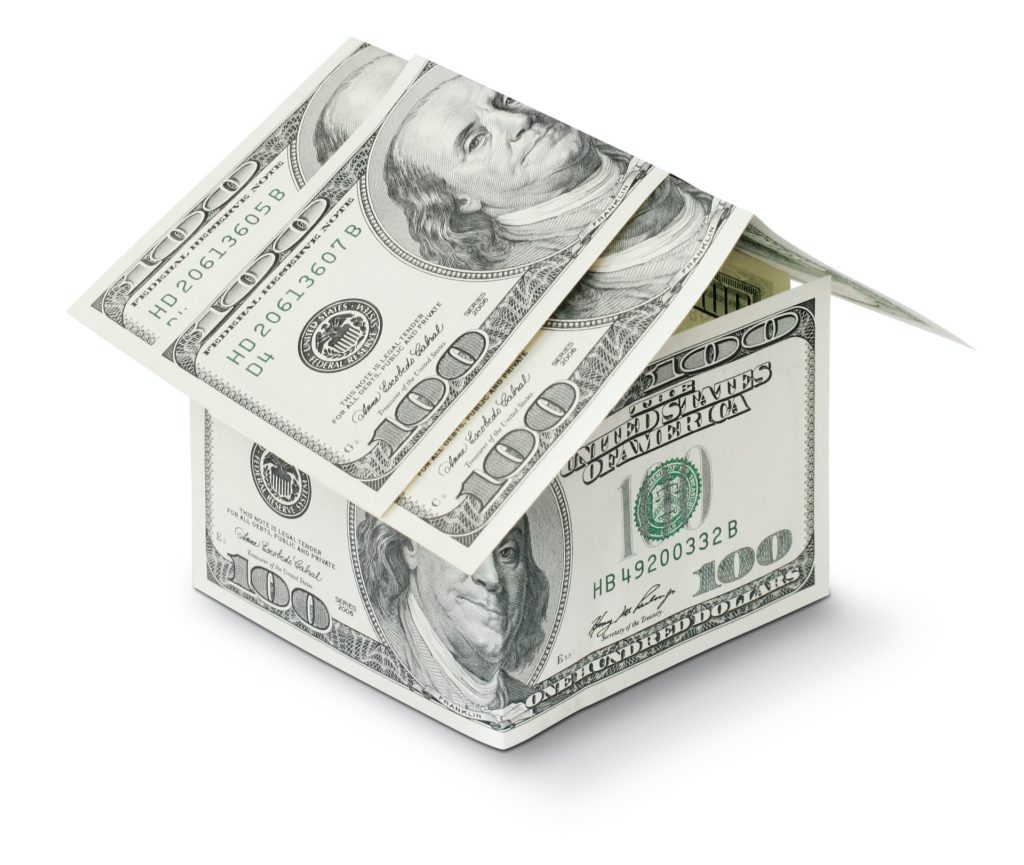With terms such as FHA loans, down payments, closing fees, and inspections, buying a house can seem intimidating. However, with this helpful guide, it doesn’t have to be. We’ve outlined all of the associated costs of buying a house and how best to prepare your budget. Let’s dive into the top seven costs you’ll encounter when purchasing your dream home.
1. Down Payment
The most considerable upfront cost of buying a home is the down payment. The percentage of the total home price you allocate for a down payment will determine the type of mortgage you will be able to qualify for, how much money the bank will approve for a loan, and the overall terms and conditions of your home loan.
There are numerous options for home buyers, including federal housing administration (FHA) and conventional loans, which each require homeowners to pay a certain percentage of the home price upfront as a down payment for the mortgage loan. Conventional loans tend to run anywhere between 3% – 20%. In comparison, FHA loans can only require home buyers to pay as low as 3.5%. However, the smaller the down payment, the higher your loan’s interest rate or length.
2. Inspections & Appraisals
Just as you would want to inspect a car before buying a used vehicle, you and the bank will want to conduct an inspection before buying a home. For this associated cost of buying a house, you can estimate to hire a professional home inspector between $300 and $400 for a single-family home. However, if you’re buying a large house that is over 2,000 square feet, plan to budget more for the inspection
Similar to the cost of an inspection, your mortgage lender will likely require an appraisal with fees that will vary based on the size and location of the property. An appraisal is requested and conducted on behalf of lenders to confirm that the property is worth the requested loan amount. In a 2014 Texas appraisal fee survey, appraisals were estimated to cost between $300 and $450 for a single-family home.
3. Closing Costs
If you’re not well versed or experienced in the home buying process, closing fees can come as an unexpected cost of buying a home. Examples of closing costs can include:
- Title fees
- Lender fees
- Application fees
- Credit Reporting fees
- Title insurance
- Lawyer fees
- Notary fees
- HOA fees
These fees are generally incurred by the home buyer and can range between 3% to 6% of the price of your mortgage loan amount. Closing costs vary based on the state where you are buying a home. If you’re buying a home in Texas, consult your local loan officer to learn about closing costs specific to the state.
4. Property Taxes
Property taxes are likely to be the largest long-term associated cost of buying your house. Two main factors determine your annual property taxes – the assessed valuation of your property and the local county or city levy. The housing market has seen growth nationwide in recent years and, as a result, property taxes and valuations have grown in nearly every state across the U.S. Currently, Texas has a slightly higher than average property tax rate of 1.69% compared to the national average of 1.07%. While Texas may have a slightly higher than average property tax, the lack of an income tax can help your budget.
5. Homeowners Insurance
If you owe money on your house, i.e., a mortgage, your lender will require you to have homeowners insurance. Typically, homeowners insurance in Texas includes:
- Dwelling coverage
- Personal property coverage
- Other structure coverage outside of your house such as a garage, fence, storage shed, etc.
- Personal liability coverage
- Medical payments coverage
- Loss of use coverage
Like any other insurance, there will be a deductible amount on your claims and a percentage or limit of coverage. You should plan to set aside funds to cover any deductibles for potential damages to your house.
6. Moving Expenses
The cost of renting a moving truck, hiring movers, or starting over with brand new furniture and decor will quickly add up. Perhaps your moving costs will be minor if you’re just moving across town. However, if you’re moving across the country, you will need to factor gas, lodging, truck or pod rental, etc., into your budget. Unfortunately, these associated costs of buying a house tend to sneak up on you and are often overlooked in the anticipation and excitement of purchasing a new home.
7. Maintenance & Upkeep
If you’ve closed on the house and signed the papers, well done! While you’ve made it through the budgeting obstacle course, you haven’t reached the end just yet. Regardless of the age of your new home, issues and maintenance will arise, and it’s best if you’re prepared for them. Financial advisors recommend setting aside a minimum of 1% of your home’s value each year. This is a safety net if the water heater or gutters need to be replaced unexpectedly.
A general rule of thumb when starting to save for a down payment and purchase a house is to plan for the worst-case scenario. This will help alleviate financial stress down the road as unexpected costs of buying a home arise or closing and moving costs end up being higher than anticipated. A safe goal is to allocate money for the down payment, closing, and overall home buying costs, while still having 1-3 months of reserves in a savings account. We understand that may be tough, but it will help make the process smoother and less worrisome.
Are you ready to apply all of this information as you start the search for your dream home? Contact Lakeside at Tessera to schedule a tour if you are looking for a house in the Texas Hill Country, near outdoor recreation opportunities and convenient amenities.

